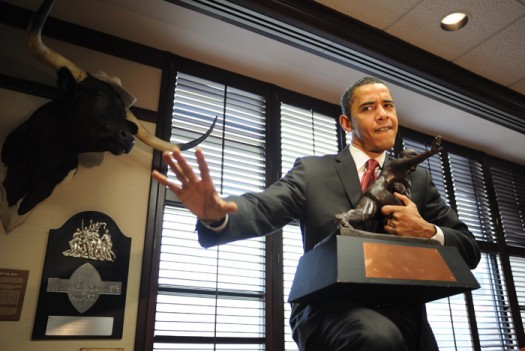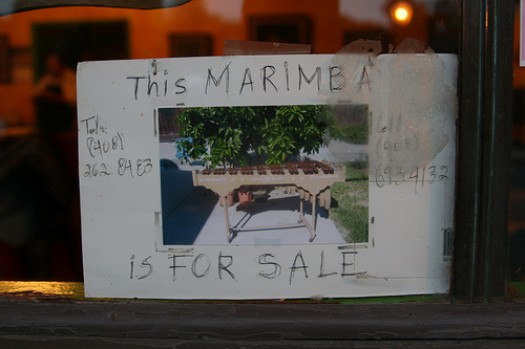Category: san francisco
Items having to do with my current homeland, the San Francisco Bay Area.
Cycling seems more dangerous, more hassle-filled, and generally more aggro than when I moved here. Why? Maybe it's me. I moved to Berkeley recently, and I'm pretty close to having a lawn that I can tell kids to get off of. Maybe it's that the city has changed a lot. There are more cyclists, more people in general (60,000!) and more density, especially downtown. On the other hand, there are more bike lanes and signage, and there's more bike awareness among the pedestrian and motorist populations. You'd think that more cyclists + more cycling awareness + more cycling accommodation would have resulted in some kind of net improvement, but it hasn't. Pedestrians seem more antagonistic to bikes; motorists of all types are much more antagonistic; and some of my fellow cyclists seem to be the most antagonistic of all. Why?Felix Salmon has written a really interesting, and widely quoted, "unified theory" of cycling that touches on what I think is the heart of it all: That most cyclists think they're pedestrians, when we're actually more like motorists.
Bikes can and should behave much more like cars than pedestrians. They should ride on the road, not the sidewalk. They should stop at lights, and pedestrians should be able to trust them to do so. They should use lights at night. And — of course, duh — they should ride in the right direction on one-way streets. None of this is a question of being polite; it's the law. But in stark contrast to motorists, nearly all of whom follow nearly all the rules, most cyclists seem to treat the rules of the road as strictly optional. They're still in the human-powered mindset of pedestrians, who feel pretty much completely unconstrained by rules.
I really agree with this. I don't know how to make it so, and I'm really not a law-and-order type. But I think that agreeing to follow the rules of the road would do a lot to make us all more predictable. Also, I'd like to add: Pass on the freakin left.
My old friend Michael Ramage has a hand in this installation in the Yerba Buena Center for Art's Sculpture Garden. He's designing and building a pair of domes, made from layers of bricks and mortar and styled on ancient techniques. The artist behind it is Jewlia Eisenberg & Charming Hostess, and the vision is that the domes will be an outdoor venue for music, contemplation, and mind-expanding activities throughout the summer. I visited on Tuesday, and I was struck by the ways that each dome's oculus (fancy word for the open, circular window at the top of the dome) framed the surrounding sky and buildings. That perspective actually kind of made the generic buildings at 3rd and Howard appear to be somewhat cool. Didn't think that would be possible.
In a cloud
Oh wow, our pal Greg Gardner put together a really nice collection of new music from local bands. It's called In A Cloud, which describes the recent winter weather and the album itself is a time capsule of San Francisco sounds in 2009-10. My favorite song is a sweet little thing called "Baby Held" by the elusive and pseudonymous Jacques Butters; you can listen to it below. There's plenty more on the album — a lovely track by Sonny & the Sunsets, a good one from the Sandwitches, a keeper from Kelley Stoltz. You can buy it directly from Greg's label, Secret Seven Records. Yay.
Transbay bird swirl
Perched among the tall buildings in downtown San Francisco, my office can feel like a nest in a tall tree. Yesterday evening, the birds that live atop the Transbay terminal swirled up to, and around, the windows of our conference room, and the aerie-like feeling was stronger than ever. One bird even landed, briefly, on the ledge of the window. I have no idea what kind of birds they are, what brought them to us, or what they hope to achieve. But I am in awe of them.
My pal Greg Gardner is working on some night moves called Secret Seven Records. A few months ago, he released some friendly sounds by Mt. Egypt, and now he's getting ready to drop some more home cooking: The Two Sides of Tim Cohen. It's a solo album by a local rapscallion named Tim Cohen, formerly of Black Fiction, and it's a real nice collection of foggy folk songs. I tend to favor the loose, spacey side of rock music, and this album is open and astral — but with rough edges that reminded me of Panda Bear minus the Beach Boys-ish harmonies. More Floyd, early Floyd. Saucerful of Secrets, soundtrack to "More" Floyd. Whatever the vibe is, it's rough and quiet and psychedelic and probably has British roots. But I'll stop before I say more because it's better than I'm making it sound, and I'll probably be on someone's knuckle sandwich list if I throw around any more crazy notions. I'll attach a song that's more Leonard Cohen, or maybe mellow Replacements, than Floyd, okay?
Photographer Robert Frank is known for a few things, primarily The Americans, a ground-breaking book of photography published in the late 50's. He is also known for avant-garde film-making, e.g., Pull My Daisy, and his never-released Rolling Stones documentary with an unprintable name.We checked out SFMOMA's 50th anniversary retrospective of The Americans today, and I was astonished at another of Frank's skills: Grant-writing. In order to fund the gathering of the photos that became The Americans, he applied for a Guggenheim Fellowship. I've pasted his clear, simple, two-part essay below.
Part 1: Frank's brief summary of the proposal
To photograph freely throughout the United States, using the miniature camera exclusively. The making of a broad, voluminous picture record of things American, past and present. This project is essentially the visual study of a civilization and will include caption notes; but it is only partly documentary in nature: one of its aims is more artistic than the word documentary implies.
Part 2: The full statement of intent
I am applying for a Fellowship with a very simple intention: I wish to continue, develop and widen the kind of work I already do, and have been doing for some ten years, and apply it to the American nation in general. I am submitting work that will be seen to be documentation — most broadly speaking. Work of this kind is, I believe, to be found carrying its own visual impact without much work explanation. The project I have in mind is one that will shape itself as it proceeds, and is essentially elastic. The material is there: the practice will be in the photographer's hand, the vision in his mind. One says this with some embarrassment but one cannot do less than claim vision if one is to ask for consideration. "The photographing of America" is a large order — read at all literally, the phrase would be an absurdity. What I have in mind, then, is observation and record of what one naturalized American finds to see in the United States that signifies the kind of civilization born here and spreading elsewhere. Incidentally, it is fair to assume that when an observant American travels abroad his eye will see freshly; and that the reverse may be true when a European eye looks at the United States. I speak of the things that are there, anywhere and everywhere — easily found, not easily selected and interpreted. A small catalog comes to the mind's eye: a town at night, a parking lot, a supermarket, a highway, the man who owns three cars and the man who owns none, the farmer and his children, a new house and a warped clapboard house, the dictation of taste, the dream of grandeur, advertising, neon lights, the faces of the leaders and the faces of the followers, gas tanks and postoffices and backyards. The uses of my project would be sociological, historical and aesthetic. My total production will be voluminous, as is usually the case when the photographer works with miniature film. I intend to classify and annotate my work on the spot, as I proceed. Ultimately the file I shall make should be deposited in a collection such as the one in the Library of Congress. A more immediate use I have in mind is both book and magazine publication.
Frank was awarded a fellowship, which amounted to $3,600, and he used this to travel in a long loop around the US in 1955–6. That "more immediate use" that he refers to in the final sentence turned into The Americans, a stunning document that is every bit as interesting 50 years later. The exhibition is captured in an extended version of The Americans, including contact sheets and commentary.
This marimba could be yours
If you haven't been to San Juan Bautista, you need to go. It's a little ways south of San Jose, an hour east of Big Sur, a long but not impossible trip from San Francisco. Mara and I were there last winter, and I keep meaning to spread the word. It's a real getaway with good old-fashioned California heritage and big cacti and a nice bakery and a good vibe.
It's also got a mission, and it's in the heart of artichoke country. They say that hard times are when the big ideas really take hold. Maybe it's time to get that marimba you've always wanted.
 Photo: Joshua Lott
Photo: Joshua LottLast June, Mara organized a bake sale to raise money for Barack Obama. It was a typically chilly summer day in San Francisco, but we made a fistful of cash, AND we got our picture taken by a passerby who happened to be a professional photojournalist. His name is Joshua Lott, and he posted it on a blog called The Stumping Grounds, which features one photo per day from one of the many photojournalists covering the campaign. Ours was posted on June 24th.
 I had to include this; it's the current photo, and it's awesome. It was taken by Scout Tufankjian, and her site is well worth a look. She's posted a series on the Secret Service which is both revealing and kind of scary.
I had to include this; it's the current photo, and it's awesome. It was taken by Scout Tufankjian, and her site is well worth a look. She's posted a series on the Secret Service which is both revealing and kind of scary.Long ago, someone spray painted "US out of North Dakota" on the wall of the Cave, a little bar in the basement of a Carleton dorm. It was directly above the stage, a stage where I saw a lot of good bands (Walt Mink, FIREHOSE, Phish, and probably others). So I spent a lot of time staring at it. It made a deep impression on me. I still think about it. Which reminds me: Secession. The counties of Northern California and Southern Oregon tried to secede from their respective states in the 40's. True story. So anyway, it makes me really happy that Justin took this photo of a Duster in his neighborhood in Berkeley. Dissent! It's your patriotic duty.






